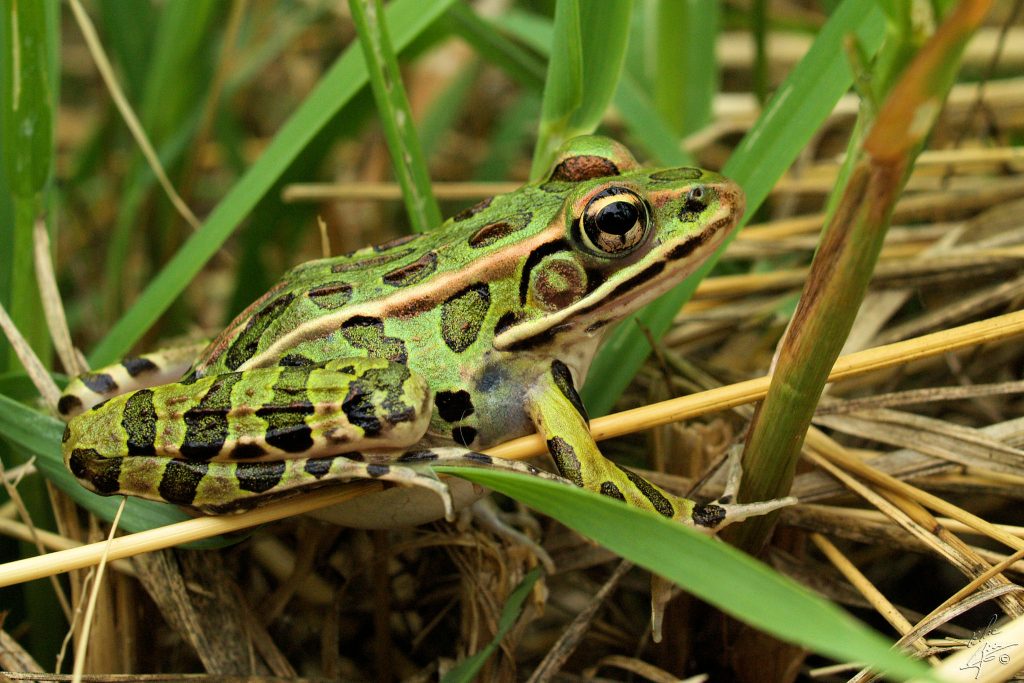Alberta Amphibian & Reptile Conservancy

Northern Leopard Frog by Eric Begin
Nature Alberta is proud to support a diverse range of naturalist organizations representing people passionate about all-things nature – from mushrooms, birds, butterflies, reptiles and more. We are excited to introduce you to the Alberta Amphibian and Reptile Conservancy. Keep reading to learn what this relatively new, interesting organization offers and how you can get involved.
The unique and diverse world of reptiles and amphibians (or the study of herpetology) has sparked the interest of many a naturalist. But as most reptiles are covered in scales, and the majority are carnivorous, there are many people who feel an almost natural aversion to these creepy crawlers. Enter the Alberta Amphibian and Reptile Conservancy (AARC). Formed in spring 2013, the AARC’s vision is to ensure that all of Alberta’s reptiles and amphibians have abundant habitat and sustainable populations for today and tomorrow. They focus their efforts on educating the general public about the species native to Alberta, the value of all herpetofauna as well as participating in research to better understand the populations in Alberta.
Reptiles and amphibians, which includes frogs, snakes, alligators, turtles and salamanders, are fascinating creatures. These interesting, cold-blooded animals come in all sorts of colours and sizes, some are related to dinosaurs and some can even live up to 100 years.
“Being with other nature lovers and educating the public is why I’m involved with the AARC,” shares Alyssa Metro, who serves on the AARC Board of Directors. “It’s rewarding knowing you can change someone’s negative opinion about snakes or other animals.”
This budding naturalist community is passionate about educating people about reptiles and amphibians native to Alberta.
“We participate in citizen science projects and also provide educational opportunities for the public,” explains Alyssa.
Some examples of the club’s activities include their annual toad walk, the Parkland Herptile BioBlitz and southern Alberta field trips. In addition to education, their efforts also include projects such as the Herpetofauna of Alberta Biobank, a collaborative undertaking developed by the Alberta Amphibian and Reptile Specialist Group and the Royal Alberta Museum.
As the AARC looks ahead, they hope to increase their monitoring and citizen science efforts. More activities mean there is ample opportunity for naturalists in Alberta to get involved and the AARC knows the value of staying connected with other naturalists throughout the province. Alyssa is excited to have AARC’s name out there and, by joining Nature Alberta, sees a lot of opportunity to reach more people who may share similar interests in amphibian and reptile conservation.
“Nature works as a whole and is highly interconnected, and I think efforts to conserve nature should mirror this,” adds Alyssa. “When we work together and stay connected, like becoming a member club of Nature Alberta, it only elevates our collective efforts.”
Looking forward, there is much to do to ensure healthy and sustainable native reptile and amphibian populations in Alberta. The AARC will continue to work to raise awareness of the importance of these fascinating creatures. Reach out to the AARC to learn more and get involved savingalbertasherps.org.
This article originally ran in Nature Alberta Magazine - Spring 2020.
